FN America displayed the latest version of their Lightweight Intermediate Caliber Cartridge Individual Weapon System at AUSA. This is the four component systems we wrote about in January.

LICC IWS components:
• Lightweight ammunition family
• Improved Performance Carbine
• 25-round purpose-built, polymer magazine
• Signature Suppressor
Chambered in .264, it was developed on behalf of the Irregular Warfare Technology Support Directorate (IWTSD), a government office, which is responsible for conducting research and development in support of U.S. and allied organizations involved in Irregular Warfare.
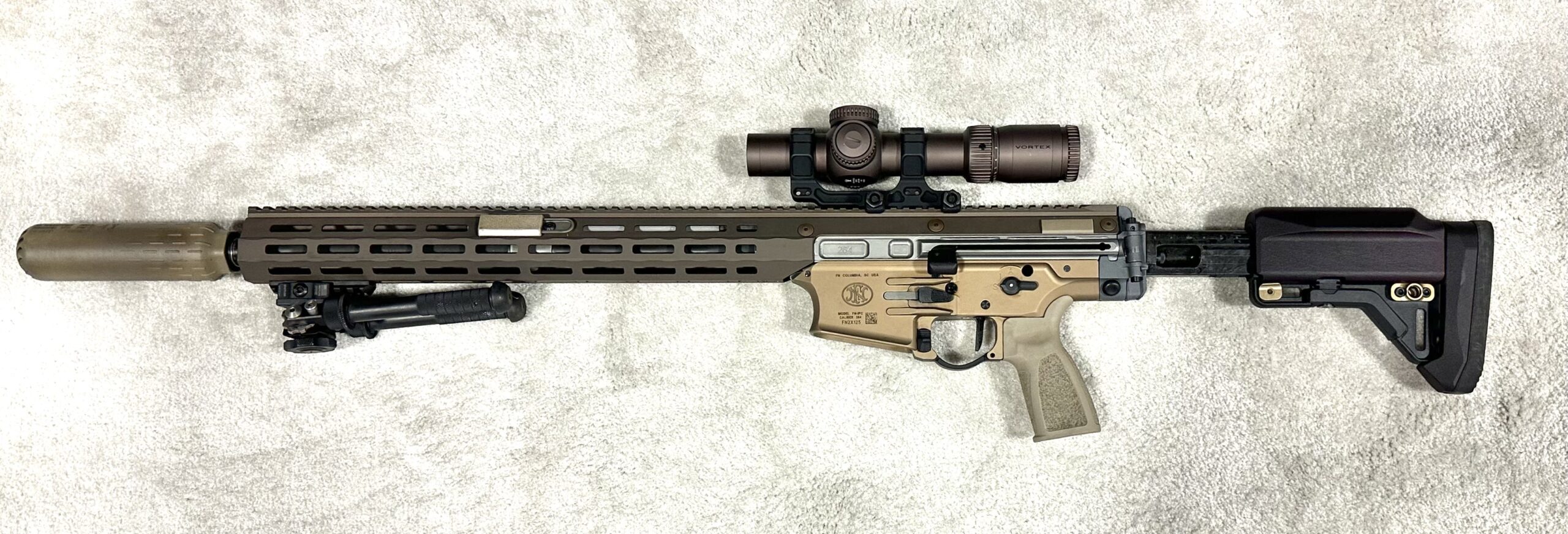
The Improved Performance Carbine comes in three versions, the DMR or Recce rifle with 18.5″ barrel in the top two photos as well as a 14.5″ Carbine and 11.5″ CQB model seen below.
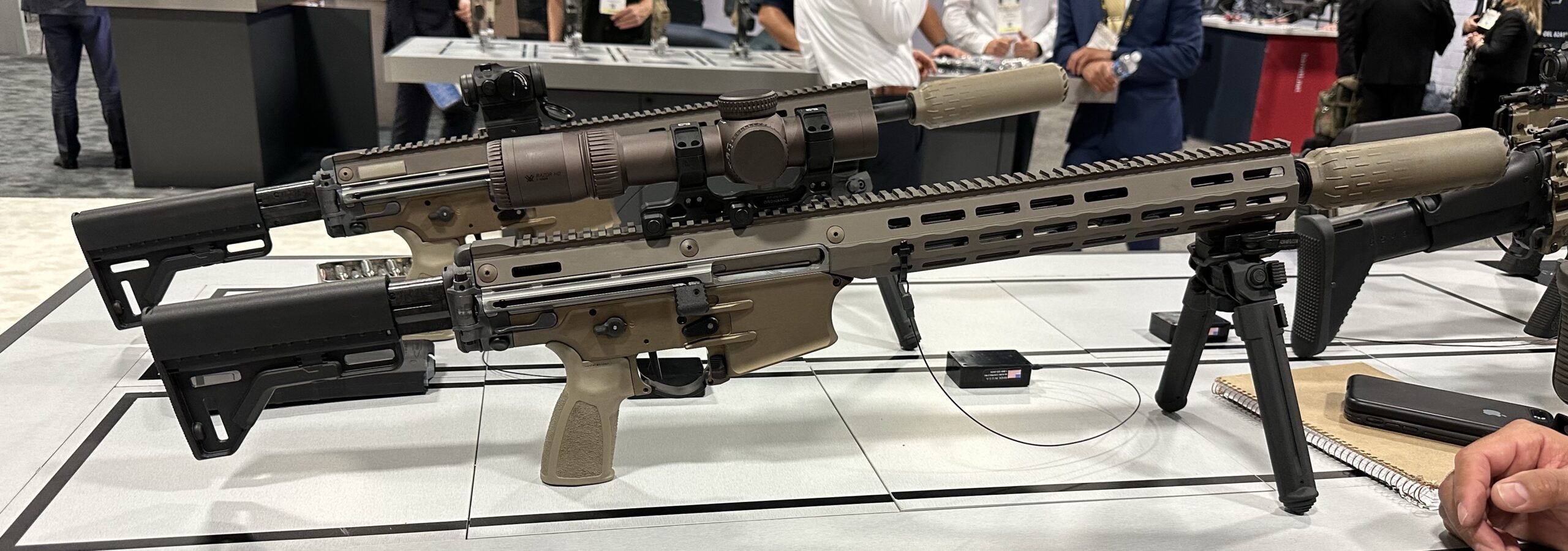
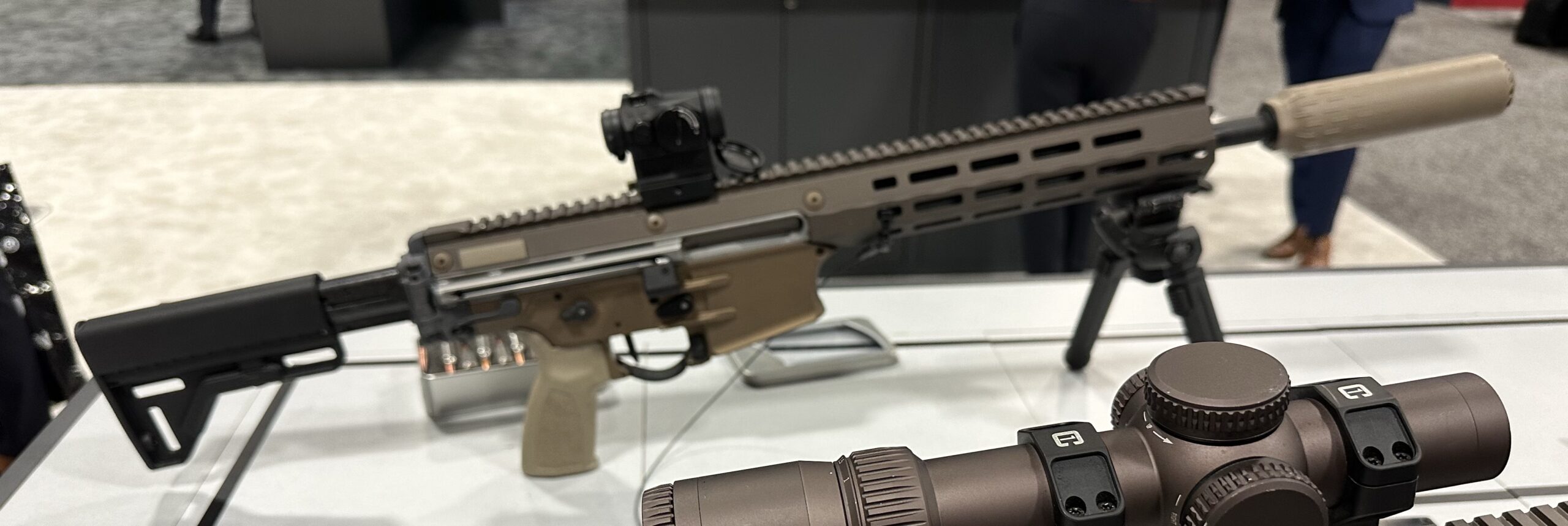
FN America has made 40 improvements to the carbine since I fired it last fall and is ready to transition to the customer.
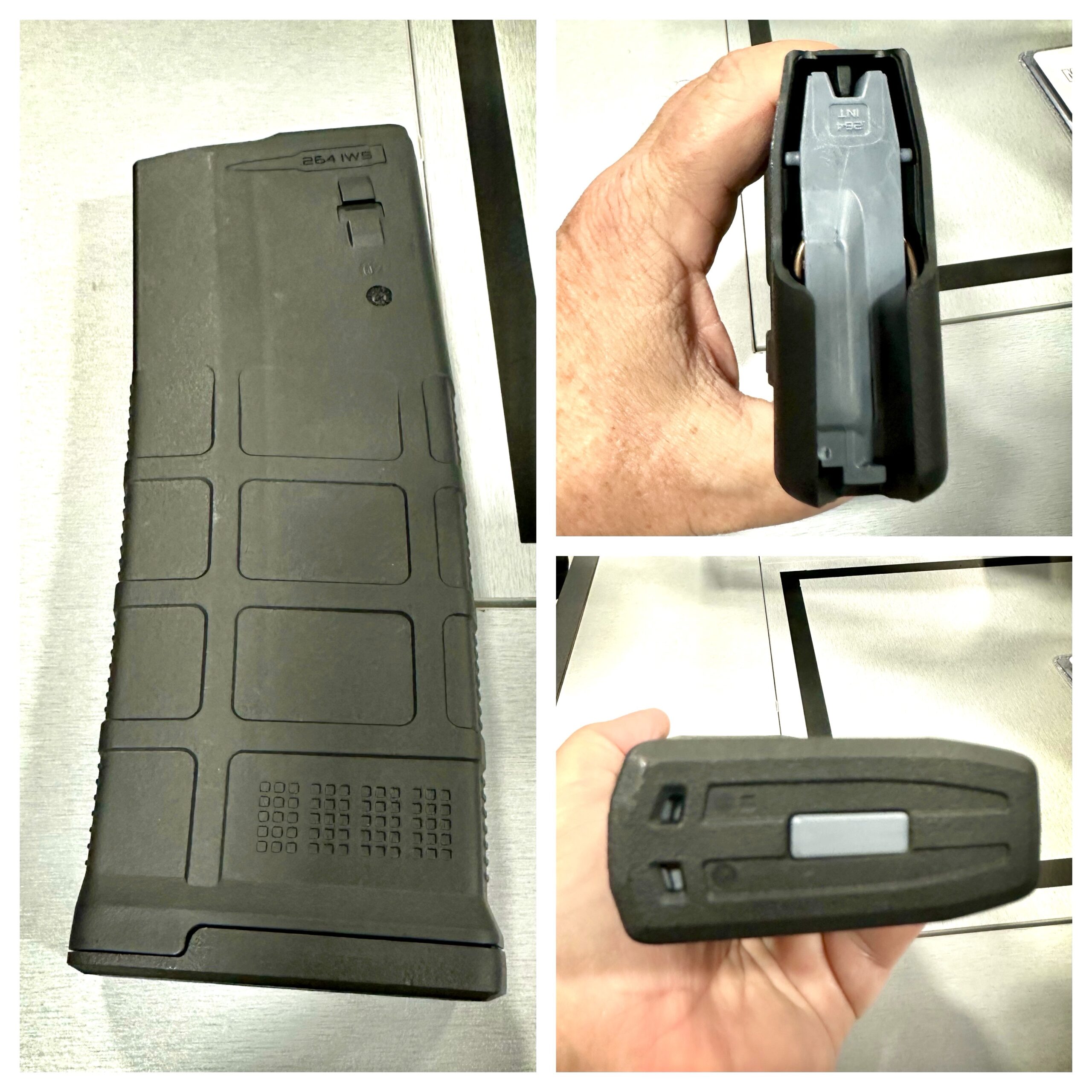
One of the myriad changes is that there is a final form 25 round magazine.
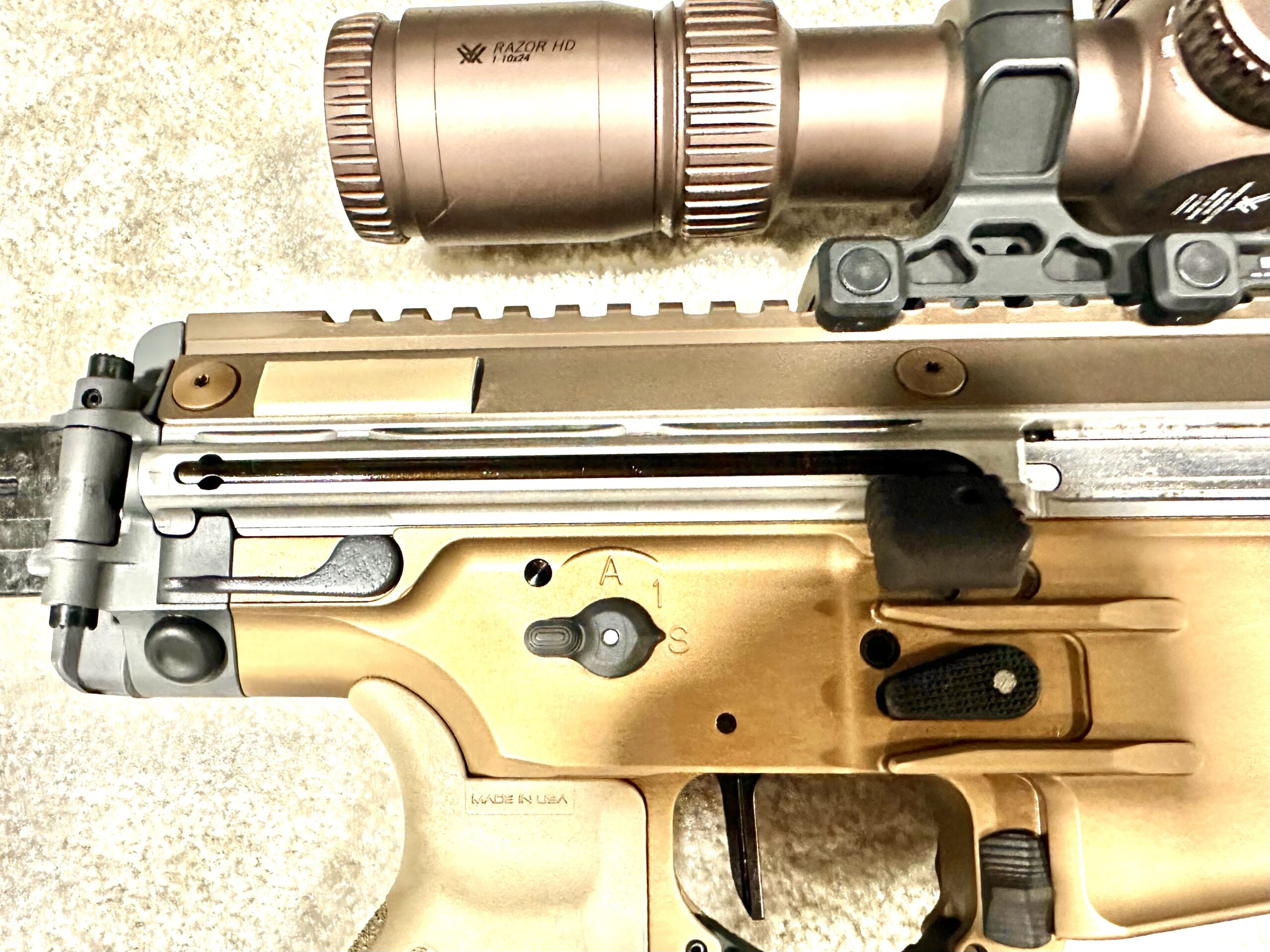
They’ve also reduced weight throughout the design. One place it is immediately visible is in the three lightening cuts made above the charging handle.
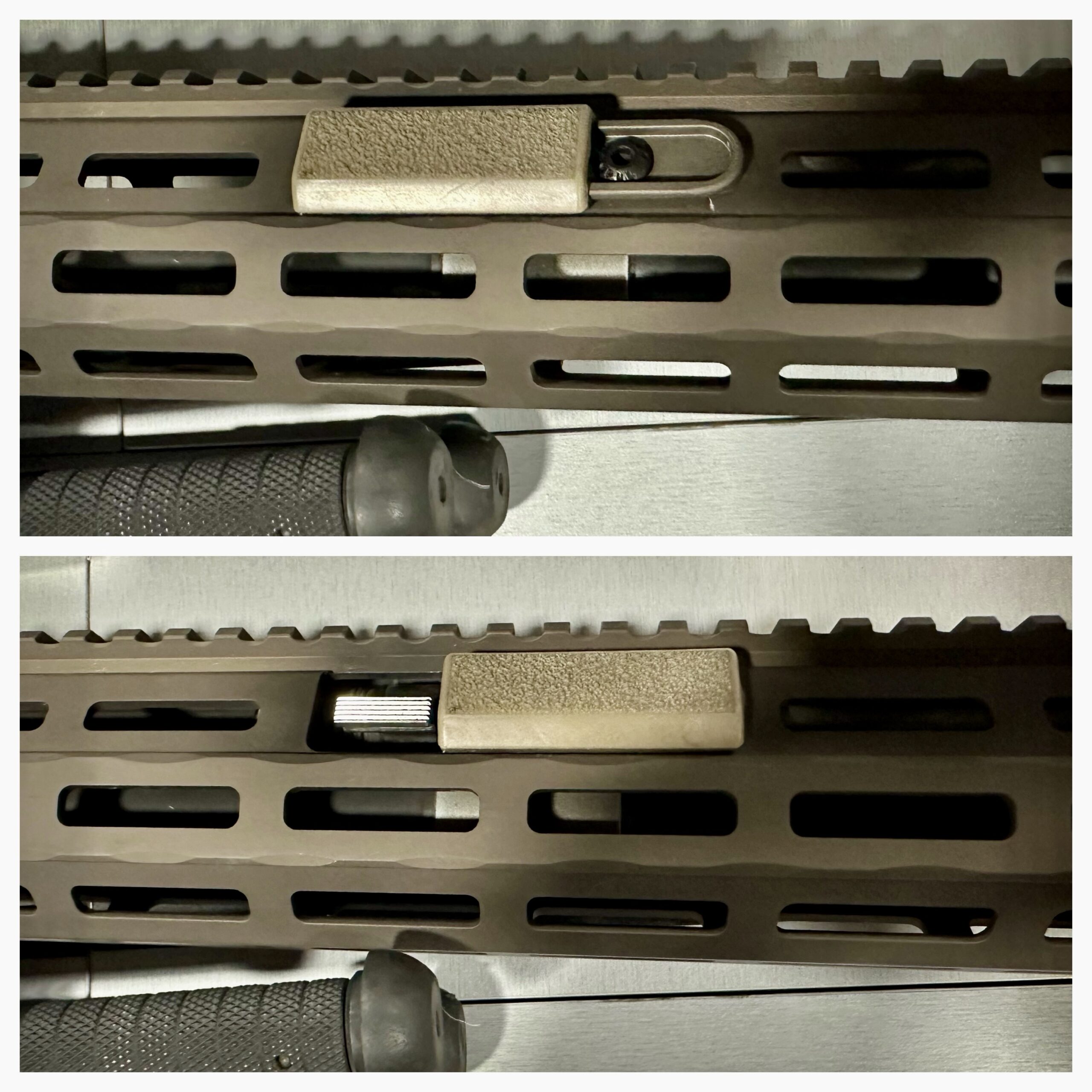
Above is a close up of the user adjustable gas block and its cover which we didn’t share last time.
This article has focused on aspects of the Improved Performance Carbine. Upgrades have also been realized with the steel cased ammunition. Hopefully, we’ll get a chance to tell you more about that soon, now that the system is heading toward First Article Test.
Read about the other system components and the overall program here.


Looks much better and reasonable than the XM7.
It’s almost identical in every significant respect, unless you’re one of those nitpicking turds crying about the 2-position charging handle.
Pay no mind to the ad-hominem-throwing turd above. It is more reasonable, AND LIGHTER, than the XM7. Unfortunately it still has two charging handles, and moreover, two cuts in the receiver for both of them with no dust cover.
Maybe Sig and FN plan to iteratively develop their respective platforms in little bits and pieces over the next 10 years until both are ready for primetime. That way they can charge the DOD – and by extension the taxpayer – for small iterative batches of guns that are continually just short of perfect until their whizz-bang gunz are ready for the spotlight. They say in sales you should never sell anything to anybody unless they’re willing to come back for more, so it looks like they have one or more generals by the short and curlies.
You typed a lot of words despite having no idea what you’re talking about.
Each charging handle has a black internal dust cover. You can see it in the pictures above.
No. I can’t see that. Nor is it written in the description. Nor does it mean there aren’t two charging handles. Nor that there aren’t still two cuts in the receiver to accommodate them.
I’m really sorry to all you internet strangers for hating on your beloved bbw chonker XM7, but I do not think it is a good weapon. That’s not changing.
Lol. Look at him go.
Hold the L. Become one with it.
I’m not sure why you’re so focused on the receiver cuts. Yes, it has cuts in the receiver. Pretty much every AR platform has some cuts in the receiver. You seem to believe that too many cuts in the receiver = the weapon spontaneously combusting on the spot.
Do you know how many cuts in the receiver an M240 has? well over 10. How’s that you say? it is RIVETED together. By the logic you are expressing above, this weapon will not make it out the arms room before falling into a pile of parts. However, it has been one of the most reliable Medium machine guns in existence.
“Ah but those holes are filled” you say. Fair enough, but the point remains that the base receiver has a LOT of holes in it, irrespective of if they are filled or not. The M249 (the weapon the XM250 is supposed to replace) has a lot of holes in it; mostly for weight savings. “Not the same thing, It doesn’t affect the function of the weapon” you say. But I would argue it does; it is a path for dirt/mud go make its way in to the weapon and cause issues; Which I guess is the argument you are making, since you mention dust port covers.
As to your comment about the guns taking 10 years to develop; Changes have been made to all weapons throughout history after they are fielded. The M2 (Arguably the longest serving weapon in US history) was changed to the M2A1 with a fixed headspace, and is still going strong. It took over 80 years for that change to be made: Should we get rid of the M2 as a result, and sue FN for selling the government an ‘incomplete’ weapons system? That’s about the level of logic you are showing with your comments.
Such a cool rifle and cartridge.
The closest to date to achieve a ‘goldilocks’ between 5.56 and 7.62 rifles, a sort of ‘AR-12’.
The use of a 0-45-90 degree S-SA-FA selector is nice to see, as are the ambi bolt release by the magwell.
Hoping FN achieves success with the .264, and/or releases a 5.56 version down the road.
As far as the Goldilocks…The LWRC Six8 begs to differ…someone just needs to get them to cross the finish line and develop 6.5 Grendel/6ARC compatible mags.
With regard to FN’s weapon…I think they know the SCAR has hit its evolutionary dead end and without a wholesale change of mentality at FN, it’s likely to only see dwindling government and commercial success going forward.
I’d be willing to bet that the IWS and derivatives will be the future of FN’s small arms line in the future.
Part one: give it some time. But those AK-derived cases are awful. They need to go.
Part two: nope, that was developed here and I don’t think Herstal will run with it, most likely because it was developed here.
Re Part One: AK/Grendel cases do seem to have their own unique trade-offs, but the increased DoD interest is intriguing, with the Geissele 6ARC contract, KAC offering a 6ARC KS-6 at DSEI, and the other assorted limited buys (Barrett, Noveske). Would you say those are all strictly explorative platforms/buys, in hopes of developing something similar but better, or are there winds blowing towards that cartridge in the DoD?
Also, regarding IWS…do you know what the parent case is? And will the government contractor own the TDP for the weapons/ammo once development is finished or will the government own it?
The SIX8 doesn’t have a leg to stand on to argue or differ here since its cartridge missed the mark like ten years ago.
I think he means the lower receiver. It’s a bit more roomy than a Mil-Spec magwell.
Yes sir, that’s exactly what I was referring to.
Bullpup it.
I think it’s better than the XM7 in terms of size, magazine size and weight. I remember thinking the M4 with all the goodies attached was getting pretty porky. I’d much rather carry and fight with something of this size when compared to the xm7.
Magazine size isn’t as firm as it seems. The XM7 uses primarily an off the self unmodified SR25 pattern magazine. That’s why it’s 20 rounds. There are already 25 round boxes. Weight is the only factor that counts against it. Because this is using a proprietary ammunition it needs a proprietary magazine
On the xm7 it’s the size of the magazines that has me worried, not their capacity. It’s hard to fit everything you want to fight with on your kit when you just have AR15 pattern magazines. If you have SR25 sized magazine and need to carry a fighting load of ammunition, the bulk of the magazines will become an issue.
The basic load remains seven magazines although I believe XM7s are being shipped with 10. The MOLLE Next Gen Rifleman sets have pouches to carry six mags.
I expect a 25 round magazine to show up eventually.
The mag load might be the same but the reduction in ammo load vs 5.56 is definitely concerning.
While I do expect a 25 round magazine to show up, bringing the two basic loads a bit closer, it’s apples and oranges. You don’t shoot .30 like you do .223. And you don’t need to put as many 6.8 rounds in a target to get the desired effect.
I mean Magpul’s been making 25rd 7.62×51 mags for a while now.
This needs its own magazine to deal with the projectiles.
From your keyboard to Magpul/Lancer systems development office.
Do you have additional info on these Next Gen Rifleman sets or maybe the contract designation for them?
You should subscribe to Soldier Systems Digest. It was mentioned a month ago.
The size is based again on the cartridge. Because 6.8x51mm is a high power round it needs the volume. That dictates the size of the magazine. Again the Army feels that the 6.8x51mm is worth the trades.
The thing that has to be remembered when trying to compare this with XM7 is that the Army dictated the XM7. They said it had to use a 6.8x51mm cartridge. What form that took was up to the vender. The Army said it had to use SR25 standard based magazines as they already had them in inventory and all the web gear. They said it had to be very close in size to the M4 carbine. They said it had to have the side charging handle. Sig found in evaluation that users often defaulted back to the AR.
As such the XM7 is the result. This is first coming from a different part of the Army with a different approach for its ammunition which in turn is directed towards a different weapon.
Close.
The Army dictated the projectile and terminal/external performance metrics that submissions had to pass in order to meet threshold/objective requirements. They didn’t actually dictate cartridge size as far as I recall.
But yes, their expectations absolutely drove most bidders’ choices when it came to cartridge size.
However, comparisons like “LICC vs NGSW” aren’t drawn to illustrate that something else meets the Army’s NGSW program criteria better than Sig. They are made to…
A) Illustrate how absurd the Army’s desired performance criteria (and associated costs ie weapon/ammo size and weight) are…and…
B) Show that there are many alternatives that better meet the spirit of NGSW, without the massive trade-offs the Army is accepting.
On A) the desired performance characteristics are based on a shift that has been happening In regards too conventional force on force combat. Level IV armor is more and more prolific and the 5.56x45mm is not able to defeat it. The range factor also came into play. Many of the biggest criticisms thrown at the NGSW often dismiss the Armor and assume all infantry combat will resemble the Counterinsurgency conflicts seen in Afghanistan as the only model.
On B) although the 6.5x43mm likely meets the range and trajectory, a huge question on penetration. Yes there are alternatives but with trade offs of their own sacrificing velocity or penetration is easier if you’re not basing your force design on the assumption of facing armored troops. Yes XM7 has a smaller magazine capacity yet so does LICC in fact XM7 could easily be rectified to use a 25 round magazine. FN thus far is giving weight range of a 14.5” barrel at between 7-8 lbs which is fairly close of the XM7’s 8.3 lbs. Yes XM7 is heavier vs M4 yet so is LICC. With the difference coming back to the receivers and need for the longer set on XM7 to accommodate the longer rounds. Its safe that we can assume that the XM7 meets the U.S. Army requirement on performance. We have no solids on the FN LICC with respect to what it’s supposed to do for its caliber. Look who developed the 6.5x43mm the Irregular warfare directorate. A part of the DOD whom operates a different mission task than PEO Soldier weapons. It’s an organization that is dedicated to irregular warfare.
Yes the Army didn’t dictate the size of the casing but they had developed a prototype from which comparisons would be based for the vendor submitted. It was the Vendors who then submitted. However without going to caseless or Cased telescopic any submission would have been 6.8x51mm. This can be seen if you look at both the failed and the successful submissions.
Right now the US Army has 3 rifle programs (not counting the Sustaining of M4A1, Compact suppressed Carbines in .300blk) running in three different calibers 6.5x43mm, 6.5x48mm and 6.8x51mm. With each being run for different parts of the DoD and different mission sets. Each with its own pros and cons, proponents and Critics. But none seem to be the one rifle to rule them all.
It’s important to note that IWS is not an Army program.
Im not very well versed in government acquisitions/logistics regulations, but if the IWS and ammo continue to be developed for the IWTSD and if they are assigned NSN’s, the Army would theoretically be able to procure them, correct?
Additionally, has there been any mention of who the envisioned end user of this project is?
Thanks SSD!
Yeah, they “could” but they aren’t going to. Institutional momentum is a helluva drug.
The original story discussed who the system was developed on behalf of.
Thank you for the correction. I should have written “ Right now the US DoD has 3 rifle programs.”
I’m guessing it’s another weight savings step but is that an m-lok slot on the rear of the receiver, directly above the charging handle? On the DMR and 11.5” it has a cover, but on the 14.5” it doesn’t. If so, seems an odd place for it and couldn’t think of what I’d want there.
As weight reduction, they could shave an extra ounce or two and stick with a singular folding mechanism. Maybe design the plate to be armorer swappable but the either/or adds complexity.
Very interesting rifle. I’d buy one and be happy with it.
Yep, sure enough it appears to be an m-lok slot. There’s an a picture from another attendee at this AUSA event (I think…) showing a QD mount in place there. Thinking a bit more on this it would be an ok location to mount a round counter.
The “concept car” of rifles. Cool and all, but the DoD BOIP is published. The NGSW is being fielded, ammunition contract is awarded and manufacturing is underway. Army Training Circulars, Range SDZs, installation range safety plans, Technical Manuals and Small Arms Repair Training is all underway.
No turning back now, the M7 and M250 are the future.
The M14 went through most of that as well and look at how that turned out. M250 is definitely the future (perhaps with a barrel swap ECP)…the M7 probably has a tougher road long term.
The 6.8 NGSW is fundamentally flawed as an assault rifle cartridge. Too bulky and heavy, both logistically and as a basic load for the soldier, and the very-high chamber pressure concept needs to be proven.
It’ll fall on its face soon enough as long as our military reverses its Woke trend and is again staffed by real warriors.
Then, a compact, yet capable cartridge, like .264 LICC is what is needed for general-purpose individual weapons.
What’s woke about 6.8? Wouldn’t a “woke” cartridge be small and low power so it didn’t inflict any damage and was easy to carry and shoot? It seems then that 6.8 is the complete opposite of woke.
So let me get this straight… The XM7 will fail because its ‘woke’… That’s a new one.
You seem to think that the .264 is better than the 6.8. Which is fine, you are entitled to your opinion. You state that the 6.8x51mm round is ‘too bulky and heavy’. Is the M110A1 too bulky as well?
The round will fail logistically? How so? Is this because it is a separate round that the platoon sergeant has to manage? News flash, the average platoon probably uses a dozen different DODIC’s(at a minimum). Considering there are several THOUSAND DODIC’s present in the DoD system, I don’t think one more is going to strain the ammunition supply system, even at the Platoon level.
Unless what you were referring to in that amazing meltdown of a rant was the Brigade Support Battalion’s ability to resource enough ammunition for the Soldiers to use. Once again, I’m fairly certain that the BSB will be capable of dealing with one more DODIC, considering they handle significantly more than that.
I’m pretty sure that these weapons will have been through production qualification testing, which takes some sample weapons and puts them through a service life’s worth of ammo. They did that as well for the previous round of testing, so I’m fairly certain any issues with the chamber pressure either have been/would have been identified by this point. Try again. Unless you are one of those people who seem to think that Sig Sauer is a part of the Illuminati/Freemasons/Grey Aliens/take your pick.
I guess ‘Real Warriors’ have to give the enemy a chance and let them get within 300 meters in order to get good terminal effects on target. I must have missed that class.
Is the XM7 heavier? Yes, yes it is. Will there be a reduction in the amount of rounds being able to be carried? Yes there will, just as there would be with the .264 LICC. Does it provide more capability for the Soldier than the M4A1? HELL yes it does.
But it’s not your problem anyway, because I doubt you, (or any of the commenters who are convinced that the XM7 is the m14 v2.0) are going to be the ones who have to carry it. Ultimately the Soldier is going to have the final say about his weapon. And their comments will matter FAR more than any of us.
Does LICC have forward assist?
A forward assist is not needed when the weapon has a charging handle mounted to the bolt carrier.